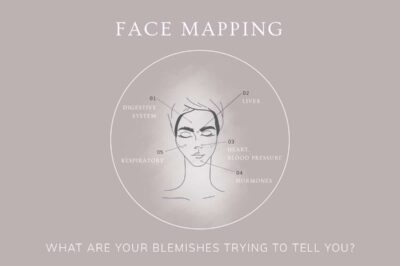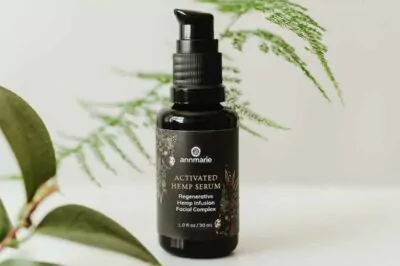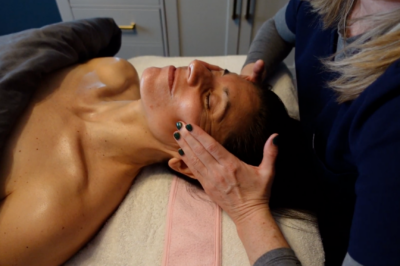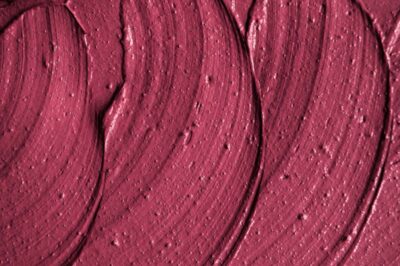Our previous post on face mapping has been one of our most popular.
Since there are obviously a lot of us interested in this ancient practice, we decided to delve into it a little further. This is the first article in a series of six in which we will explore more deeply what face mapping is, and how you can use it to help understand your acne and other skin issues.
What Is Face Mapping?
What we call face mapping today actually comes from the ancient Chinese practice of “face reading.”
Chinese doctors, scholars, and other professionals used face reading to help aid and diagnose patients and prominent leaders in society. They believed the face represented the health, fortune, and energies of a person, and that an experienced reader could create a physical, psychological, and emotional profile of an individual just by thoroughly examining the shape and condition of the face.
Readers combined the “energies” in the features, the “life points,” and the “three divisions” (forehead, mid-face and lower face) to determine personality and character traits, as well as to diagnose ailments or malfunctions in the digestive, circulatory, and digestive systems of the body.
To these experts, the skin wasn’t just about appearance or aging. It was a window to the person’s life; a reflection of every facet of their health, habits, lifestyle, character, and fate. They felt the skin recorded a person’s existence, revealing clues about what they’d gone through.
Using a “map” of the face, which was divided up into zones, and connected via other energy channels and flow to various vital organs in the body, face readers conducted their examinations. With optimal body energy, the features would look to be in good condition, but if illness was present, shapes, colors, textures, and functions in the face changed to reflect that illness.
Since the subtle shapes in the face, as well as marks, scars, and soft tissues, can all transform with time, it was believed that an individual could also change, and form a better future for himself or herself.
How Do We Use Face Mapping Today?
In the Western world today, we have become curious about face reading. We have no scientific studies behind it, but that hasn’t stopped us from researching it and putting it to good use in our lives.
So far, we have focused mostly on the health aspect of the practice—the idea that certain areas of the face can give clues as to health problems in the rest of the body.
What might our faces be saying about our health?
We use the traditional Chinese face map to determine what goes with what. The cheeks, for example, are said to give clues as to the health of the respiratory system, while the chin exposes issues with hormonal balance.
For this series of posts, we’ll be focusing particularly on acne, since that is such a stubborn and difficult skin problem for so many people, and because it is believed that “where” the pimples and blackheads show up on the face may give clues as to what’s causing them.
What does it mean when you get a pimple on your chin, for example? Using face mapping, we can determine that perhaps there is a hormonal connection—you break out on your chin during your menstrual period, perhaps. Once you have that information, you can use it to make adjustments during that time that may help you avoid that type of breakout.
We’ll also address other skin problems, as well, like dryness, redness, and inflammation, to see how the health of other bodily systems may be showing up on our faces, and how we might take a holistic approach at the same time.
A Quick Tour of the Traditional Face Map
In future posts we’ll be going over the following areas in more detail. For now, here’s a quick overview to get you started.
- Forehead: Linked to digestion. More specifically, the upper forehead is reflective of the bladder, and the lower forehead of the intestines. Problems here could reveal constipation, urinary tract infections, IBS, or other digestive issues.
- Between the Eyes (Brows): Linked with the liver. Issues here can reveal diseases like hepatitis, jaundice, gallbladder disease, or fatty liver, or just that you consumed too much alcohol the night before. Eating a very fatty meal, or eating late, can cause acne or flaking here.
- Nose: Linked with the cardiovascular system. Acne and oiliness here is often connected with blood pressure, cholesterol, and circulation.
- Cheeks: Linked with the respiratory system—lungs and sinus areas—but also with the gums and teeth. Breakouts can indicate sinus or allergy congestion, exposure to air pollution and smoke, or gum inflammation and infection.
- Jawline and Chin: Linked with the reproductive organs and hormonal system. Breakouts on the sides of the chin are often associated with the menstrual period, or with a stressful time (stress triggers the release of hormones like cortisol). Pimples right in the middle of the chin are more often connected to the digestive system.
Have you experimented with face mapping? Have you noticed benefits in your skin?
If you would like to learn more on face mapping and the different parts of the face that are connected to different organs in the body, read our other posts!
Face Mapping: the Digestive System and Your Forehead
Face Mapping: the Liver and Between the Brows







What if I am experiencing clogged pores all over my entire face, and nothing has helped. What could it be? Help!
What about under the chin/jawline and neck? Is there any connection for this area like there is with the face? I tend to break out on my neck a lot and this area is not extremely oily like the rest of my face. I’m curious if this area is hormone related as well. Any thoughts?
I literally have all of the mentioned problems cause i have blemishes all over my face, on forhead, between eyes, on cheeks, on nose, on jaw and chin…just about everywhere…so that means i have hormonal problem, blood pressure problem, liver problem, respiratory problem, etc. FML
Hi Jeena,
Clogged pores could be caused by many different things. The Face Mapping is a guide to specific places where there may be congestion. If you’re experiencing clogged pores all over your face, it’s possible that you’re working with products that aren’t suited to your skin or it could be caused by an allergy. We would suggest working with a holistic practitioner.
I love this topic! I have been wanting to learn more about facial diagnosis for a long time.
I’m curious, what does the upper lip represent? I just got a couple of pimples on my lip near the nasolabial fold and I’m not sure why.
So what foods did you need to avoid?
Hey Halli! For me, it’s dairy and most grains that really set me off. And of course too much sugar. Now that my skin is clear, and has been for years, I can have a little dairy from time to time and it’s fine. Butter and ghee don’t bother me at all. I write a blog called “happy, healthy and hot” and a lot of the posts are about nutrition as it relates to skin care. (There are also a lot of mentions of Annmarie Gianni products, since I love them.)
What a bout black spot on the cheelks and oily skin by the tie you wake up as if i had added a kilo of grease. I understand preety much the mappin thing and just asking.Thanks for the the tips they are alot of help.
I was told by a natural practioner/dr. that pimples on the nose is a sign of detoxing too. Have you heard that?
This is really interesting to me! Thanks for opening this subject up. I love the Ann Marie products and have seen so much good coming from using them.